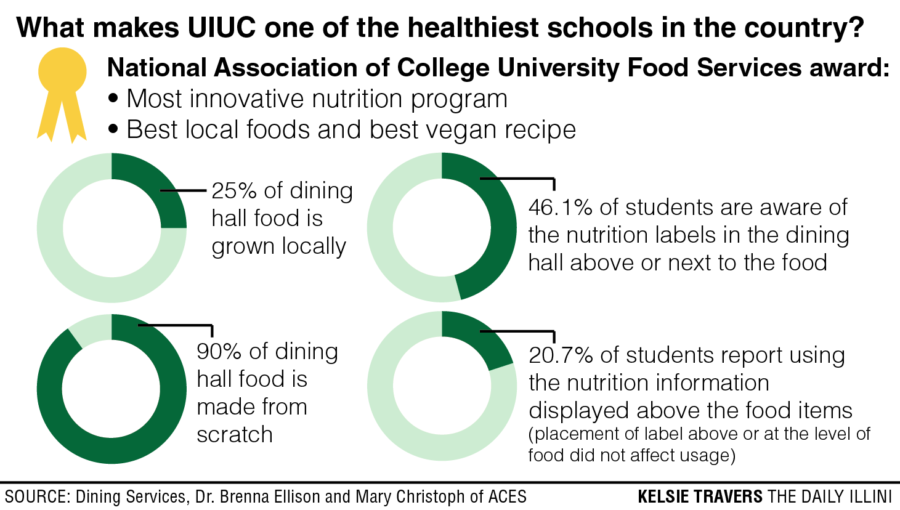University discusses recent healthiest-college ranking
September 28, 2015
Last month, the University was given a new ranking to crunch on.
An article on Greatist.com named the University the seventh-healthiest school in the country. The University also became one of Time’s top-fifty healthiest schools.
A young adult’s college years aren’t notoriously known for being the healthiest.
And recently, Princeton Review named the University as the nation’s top party school. The University is known for a day-long event, Unofficial St. Patrick’s Day, where students engage in drinking-related activities. Campustown’s legal-bar entry is also 19 and above.
Lor Clincy, sophomore in FAA, said these factors may contradict the healthiest-college ranking.
Get The Daily Illini in your inbox!
“With our bars being 19, it only encourages underage drinking,” she said.
But Clincy said she still believes the University has many resources for students who are conscientious about their health.
“We have a lot of resources for students to work out,” Clincy said. “The counseling centers are also good for mental health.”
Janet Kroencke, assistant director of student wellness, said the University tries to stay one step ahead of the game in the amount of resources it offers.
“Our health center provides health education surrounding both physical activity and nutrition,” Kroencke said. “I’m assuming that the fact that we have so many services for students helped make us one of the healthiest schools.”
Kroencke explained that taking advantage of the University’s personal trainers, as well as group fitness classes, gives students an edge in terms of health.
“Every year, the number of students buying group fitness class passes grows,” Kroencke said. “What we do is try to stay ahead of the game in the classes we offer and make sure that we have the latest and greatest in class formats.”
Some of the most popular classes include body attack, body jam, body pump and Zumba. Kroencke said sometimes, these classes are so full that they have to turn students away.
The University also hires employees that are informed about fitness. They switch the classes made available to students annually and try to have what students expect to take and more.
Emily Greibe, former three-sport athlete and sophomore in FAA, said ARC classes helped her stay fit and transition from high school to college.
“In high school, I worked out every day with different sports teams, sometimes twice a day, so I was very active,” Greibe said. “I was really concerned about how I would stay active in college, but freshman year, I was in a dorm across from the ARC and went every single day.”
Greibe has taken Zumba, yoga and body combat at the ARC.
In terms of equipment, the University keeps a five-to-10-year plan in mind for what is coming in and out of the gyms and rotates old equipment with new equipment.
The University was also one of the first schools to offer an instructional kitchen to its students. Staffed with Dietetics majors, they help educate students on nutrition and informed about healthy food choices.
“We do nutrition consultations and look at students’ food logs and explain what they’re missing and how they can make their diet more substantial,” Kroencke said.
The University’s dining halls also help students make healthy choices.
The dining hall chefs learn what is healthy and what isn’t, and then they create their own menus. According to Erica Nehrling Meador, assistant director and dietitian of Dining Services, one chef went vegan over the summer just to come up with more vegan recipes.
“We work to have a variety of foods, so we can offer students both the comfort foods they want, but also have healthy dishes available regularly as well,” Meador said. “We just try to make sure that there’s enough variety of healthy dishes that students will hopefully choose them over the comfort food.”
Approximately 25 percent of the food that the dining halls offers consists of locally grown ingredients, according to Meador. Around 90 percent of the food is also made from scratch.
Overall, Meador said this ranking reflects the University’s hard work to provide healthy options.
“I think so much went into UIUC getting this ranking,” Meador said. “We push our chefs to really think about health, and that’s something that’s in their minds all the time, and they also know that everything is okay in moderation.”







